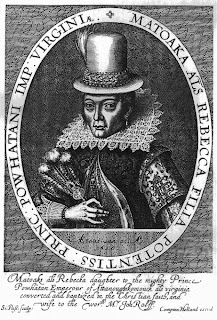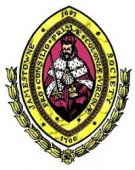Summary of First California Company Lecture October 29, 2011
By Diana Johnson
Background Information
George Washington grew up poor, but as a teenager he learned surveying, earning his wealth and respect by surveying Virginia’s Western Wilderness for homesteaders there.
By international treaty, France claimed all lands north of the Great Lakes and the Saint Lawrence River, while Great Britain claimed all lands south of that line. (No one asked the Indians what they thought.)
In the winter of 1753-54, Lt. Governor Dinwiddie assigned Washington to spy on the French who were beginning to lead Indians in Virginia’s Western Wilderness, torturing, scalping, and murdering Virginian settlers. At the French Fort Le Boeuf, just south of Lake Erie, Washington and his group discovered 200 French canoes plus material for more. When the French and Canadians returned from wintering in Montreal to Fort Le Boeuf, they would be able to send a force of 1,500 men or more, plus cannons, to erect several forts south along the Ohio River.
Upon hearing Washington’s report, Lt. Governor Dinwiddie called an emergency session of the House of Burgesses, urging the members to raise money to support the Virginia Militia in protecting their citizens against the French & Indians.
The French & Indian War Begins
 |
|
Map of the area of conflict in the French and Indian War
|
In the early spring of 1754, 300 men of Virginia Regiment Militia, meet in Alexandria under Colonel Joshua Fry and Lt. Col. George Washington. Fry is the highest-ranking military leader in Virginia. Washington has been given the rank of lieutenant colonel by Dinwiddie in recognition of his services as spy the previous winter, and also because he knows not only the geography of the Western Wilderness, but also has a personal relationship with the English fur traders, and the loyal Indians in the area, especially Seneca Chief Monakaduto.
The regiment leaves immediately for Will’s Creek Station, where other colonies’ militias and two companies of the King’s British Regulars are expected soon.
Washington takes 150 men to an area farther west known as the Great Meadows, leaving Fry to continue drilling troops, and collecting others as they come. Great Meadows (which will become known in history as Fort Necessity) is an area large enough to serve as base camp for the large number of men expected to join the fight. Washington orders 47 men under Captain Trent to go to where the Allegheny and Monongahela Rivers join to form the Ohio River. They are assigned to build a fort, denying the French access to the Ohio River.
Soon thereafter, Washington selects a group of 40 men to go with an Indian runner from Chief Monakaduto to fight a French contingent the Indians have discovered. The Chief and some braves lead them to an encampment of French soldiers. In the ensuing fight, 9 French are killed; 21 French soldiers surrender. The 21 prisoners’ wrists are bound and they are brought back to camp in Great Meadows. The rest of the troops and Colonel Fry are still not there.
Captain Trent and his 47 men, sent to build the fort, return defeated. They had too few men, insufficient supplies, and no training in military engineering. French soldiers, 500 strong with 18 cannon arrived, and told the militia, “Surrender or be blown to bits along with your piddling fort.”
In early June, Captain Mackay and the British Regulars arrive at Great Meadows, along with the North Carolina Militia. No other colonies had sent militia to join the fight. Equally stunning bad news was that Fry had died from injuries caused when he fell from his horse. The final blow is that Captain Mackay and his troops refuse to obey Lieutenant Colonel Washington because Governor Dinwiddie had assigned him his rank, and King George commissioned the regulars. They demand an extra shilling a day for each man who does any work.
Washington refuses their extortion and orders Mackay and his regulars to stay at Great Meadows with French prisoners. He takes the remaining 150 men to begin making a wagon road from Great Meadows to a log cabin and storage shed built by his friend, Gist, farther north on the way to the Ohio. Chopping trees, pulling stumps, shoving stones, his men become sick and exhausted. Nevertheless, they push on past Gist’s to the Ohio Company’s Redstone storehouse. Almost out of lead and powder, and with only a two-day supply of food left. Monakaduto’s scouts and some French deserters arrive, telling them strong reinforcements are marching from Fort Duquesne to attack them.
They return to Gist’s, and begin building an entrenchment around the two buildings there. Delaware Indians come to spy. Washington orders Mackay and his regulars to leave a small garrison at Great Meadows to guard the French prisoners, the rest to come to Gist’s. Mackay and his men arrive about two weeks later. Mackay says, “Washington is insane, trying to make a stand at Gist’s with only two small buildings.”
Washington decides to go back to Great Meadows, calling it “Fort Necessity.” Here, Washington receives a dispatch from Lieutenant Governor Dinwiddie, who, upon Fry’s death, promoted him to full colonel. Captain Mackay and his regulars still refuse to help. Monakaduto warns Washington not to fight from the log enclosure in the meadow, but to make his stand on the hilltop. Washington ignores his advice causing Monakaduto to say, “The French behave like cowards, and the English like fools.” He and his braves leave.
Negotiations after the defeat at Fort Necessity lead to exchanging the 21 French prisoners for Washington’s troops guaranteed freedom to leave, unmolested with whatever they can carry.
Year Two 1754-55
Over the winter the Virginians build Fort Cumberland at the head of Will’s Creek. That June, General Braddock and 2200 men arrive and with Washington and the Virginia Militia, leave Fort Cumberland into the Allegheny Mountains on their way to French Fort Duquesne at the head of the Ohio River. Braddock derides the militia and completely dismisses their loyal Indians.
At the Battle of Monongahela, fought 7 miles south of Fort Duquesne, the British regulars go into block formation. The militia moves to fight from behind trees and rocks, as the French and Indians are doing. The British call the militia “cowards.” When the British realize the militia aims at individual men they call them “murderers.” The overwhelming defeat leaves English dead piled two and three deep. The surviving militia troops lose all baggage, weapons, horses & wagons.
It is my thesis that the militia troops became disillusioned with the continual treatment of disrespect from the English regulars. As a result, militia bravery and determination to fight to protect their homes and country from attack by a foreign enemy, became a precursor to the American Revolution by disassociating them from loyalty to King George, his troops, and England.

Diana M. Johnson is a member of First California Company, which she served as Secretary and Newsletter Editor. She is a Life Member of the California Writers Club and has written five adult historical novels, as well as one for youth, all based on members of her family tree. Her most recent novel is Wagons to Hangtown, the story of her great, great grandfather’s journey to California during the Gold Rush. Diana was graduated from UCLA and earned her master’s degree from California State University, Northridge. She taught in the Los Angeles and Beverly Hills Unified School districts. She also lectures on Jamestown and other topics. Her website is http://www.superiorbookpublishingco.com/SuperiorBookPublishingCo.com/Home_Page.html. You can also contact her at: billndi@verizon.net
Recommended Reading: Wilderness Empire by Allan W. Eckert
Editor’s Note: For other reading, see:














